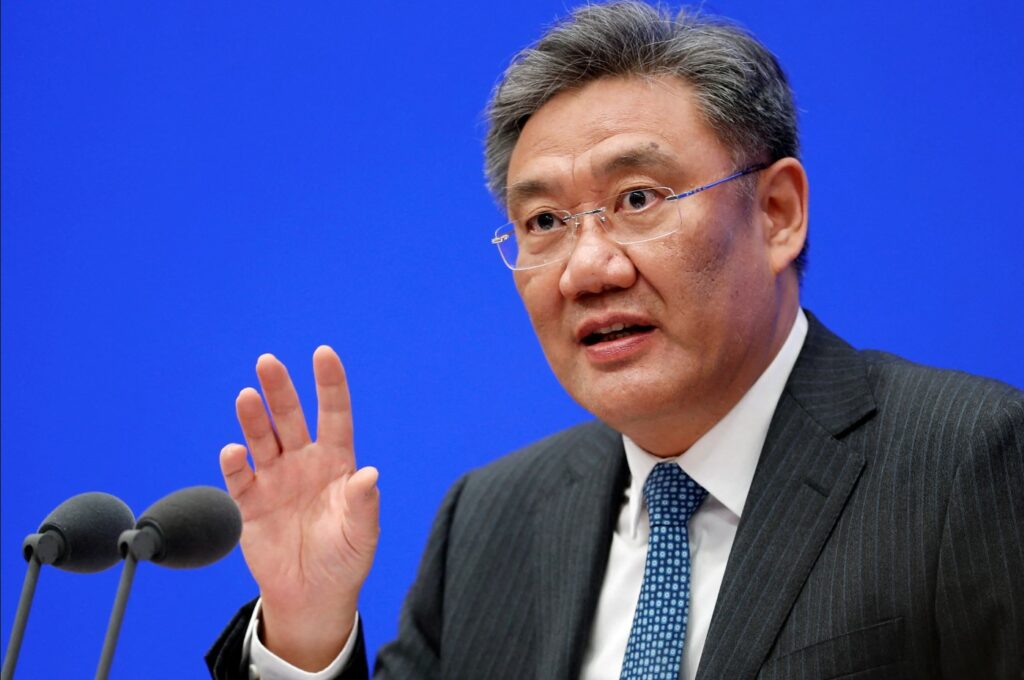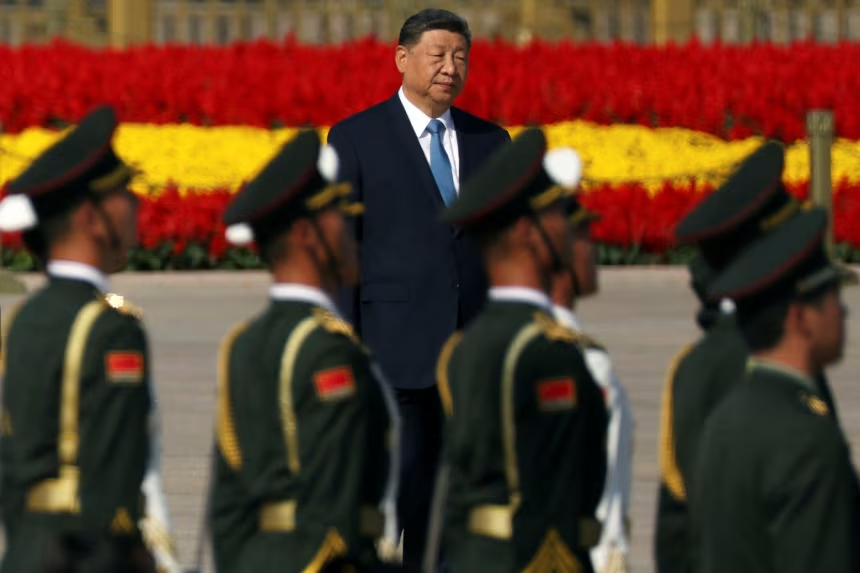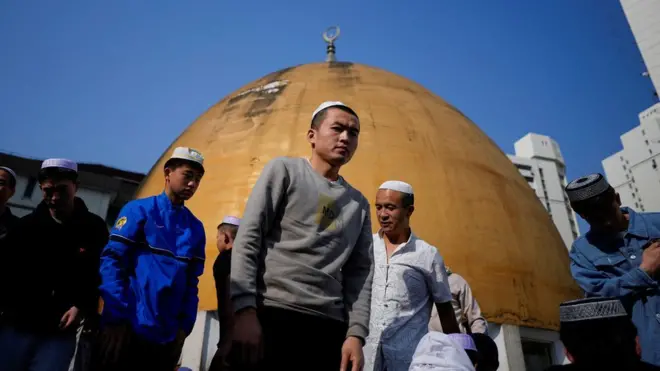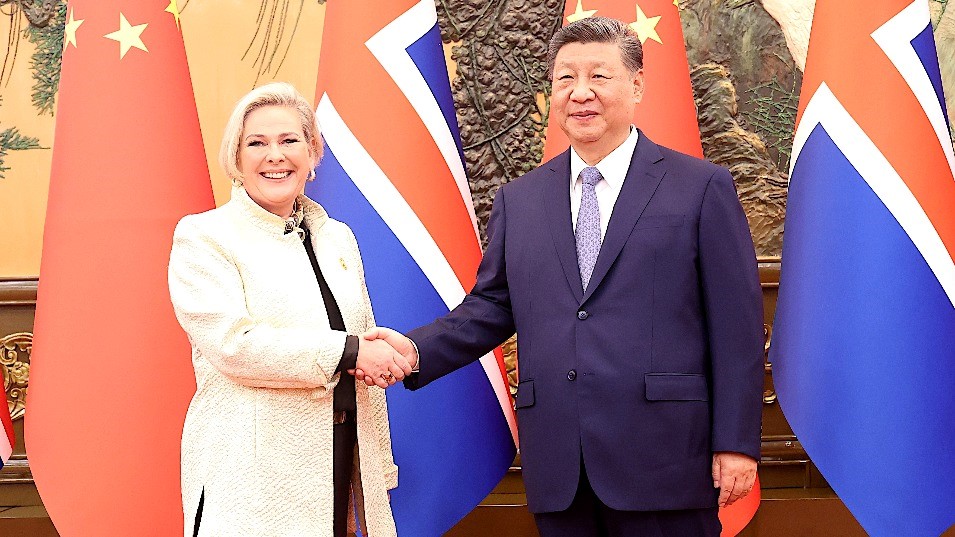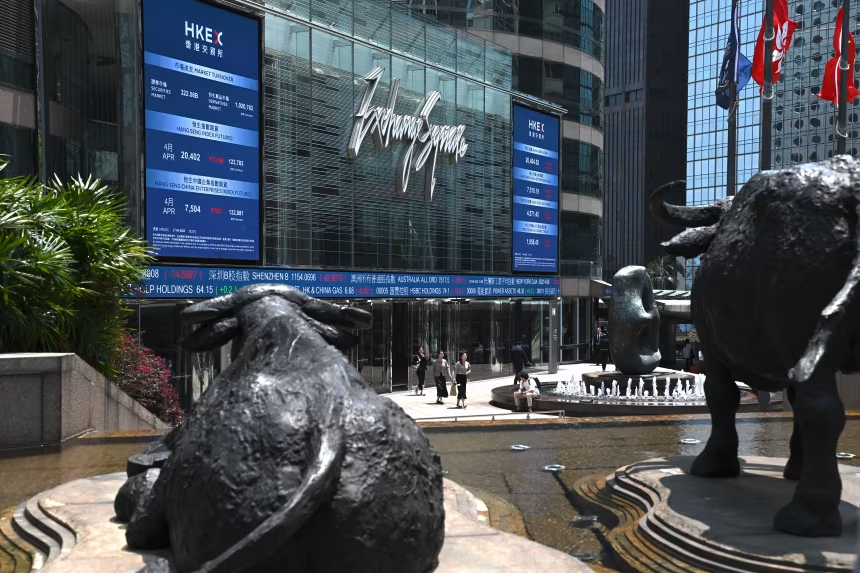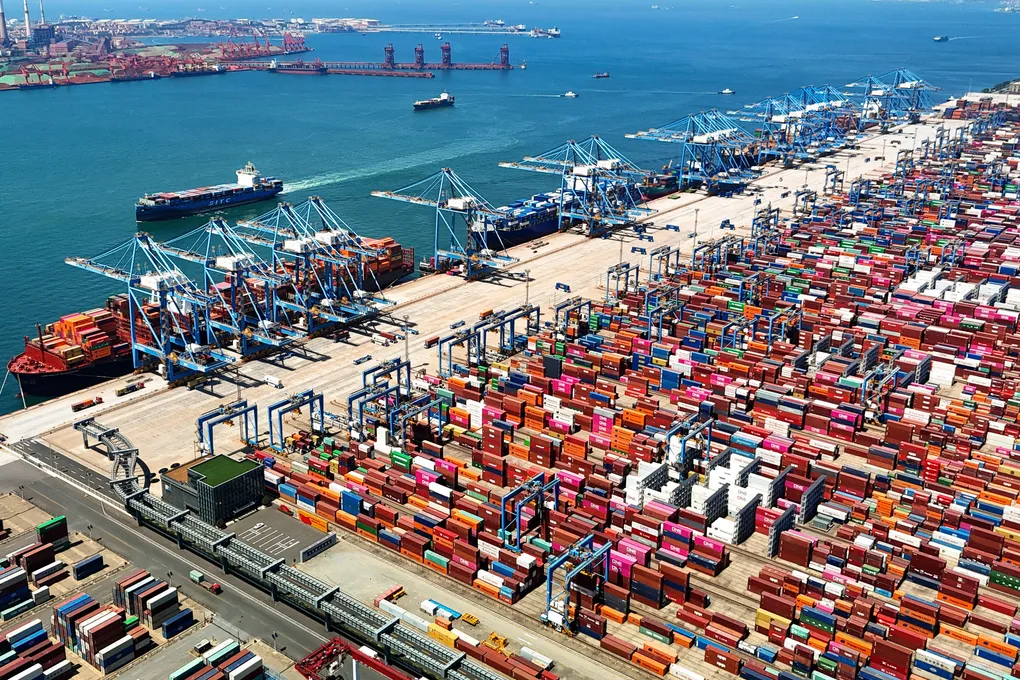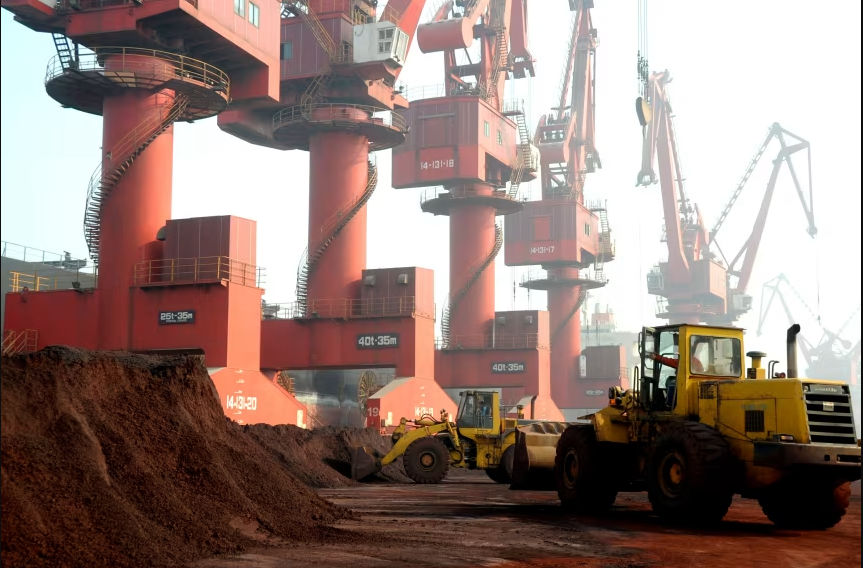Three Chinese Nationals Detained in Georgia For Trying To Buy Uranium Illegally
Three Chinese Nationals Detained in Georgia For Trying To Buy Uranium Illegally Read More »
On October 25, Georgia’s State Security Service (SSG) announced the detention of three Chinese nationals in Tbilisi for allegedly attempting to illegally purchase two kilograms of uranium, a radioactive nuclear material.
According to the SSG, the suspects planned to buy the uranium for USD 400,000 and smuggle it to China through Russia. One of the detainees, who was residing illegally in Georgia, reportedly brought in Chinese experts interested in acquiring the material and began actively searching for uranium sources within the country.
The investigation also revealed that other criminal groups from China were involved in assisting the operation. The detainees have been charged under Article 230 of Georgia’s Criminal Code, which carries a penalty of up to 10 years’ imprisonment.
The case underscores growing concerns that Georgia, under the Georgian Dream government’s increasingly anti-democratic policies, is becoming a safe haven for arms traffickers and individuals seeking to circumvent international regulations and sanctions.
We will continue to monitor developments in this case and provide further updates as additional information becomes available.
Three Chinese Nationals Detained in Georgia For Trying To Buy Uranium Illegally Read More »
As China prepares to unveil its 15th Five-Year Plan, Taiwan is increasingly concerned that Beijing could use the economic blueprint to expand influence across the Taiwan Strait — not only through trade and industry but also over Taiwan’s nearby islands.
Taipei’s officials fear that Beijing may symbolically include Taiwan or its offshore islands, such as Kinmen and Matsu in the upcoming plan. The move would blur the boundary between economic cooperation and political control.
China’s new plan is expected to emphasize high-tech industries, green energy, and infrastructure. Analysts say Beijing could seek to integrate Taiwanese companies into its economic system, offering reasons to attract investment and align industries such as semiconductors, electric vehicles, and artificial intelligence with Chinese priorities.
Beijing promotes such cooperation as “mutually beneficial,” but Taiwan sees it as part of a long-term strategy to increase dependency and weaken resistance to unite.
Analysts highlight growing concern over Kinmen and Matsu — two Taiwanese-controlled islands located just a few kilometers from China’s coast. Beijing has recently expanded air routes, increased coast-guard patrols, and even proposed building a bridge from Xiamen to Kinmen without consulting Taiwan.
Taipei warns that such moves could be early steps toward asserting de facto control. “If they dare to invade Kinmen, we will become the next Crimea,” one Taiwanese official stated.
Experts note that Beijing’s approach has shifted from direct military confrontation to economic and infrastructural integration. By placing Taiwan’s economy within China’s broader development goals, Beijing aims to make this unity appear both practical and inevitable.
At the same time, residents of Kinmen and Matsu — who depend heavily on trade and tourism from the mainland — face a difficult balance between economic opportunity and national security. The islands are also vulnerable to critical infrastructure threats, including undersea communication cables. Taiwan has detained China-linked vessels suspected of tampering with these cables and stepped up patrols, highlighting concerns about Beijing’s non-military pressure tactics.
Taiwanese leaders have urged Beijing to refrain from including any Taiwanese territories or projects in its domestic policies. Meanwhile, Taiwan continues to strengthen defenses on its outer islands, investing in anti-drone systems and coast-guard patrols.
Analysts warn that even if China’s plan stops short of explicit annexation language, any reference to cross-Strait “integration zones” or infrastructure links could heighten tensions and challenge Taiwan’s sovereignty.
Beijing’s next five-year plan may shape more than China’s economic future — it could redefine the balance of power across the Taiwan Strait. Through a mix of economic encouragement and strategic planning, China appears intent on binding Taiwan closer to their policy one policy step at a time.
Beijing’s New Five-Year Plan Raises Alarm in Taiwan Read More »
Amid mounting trade and geopolitical tensions between China and the European Union, China’s Commerce Minister Wang Wentao held a video meeting with European Commissioner Maroš Šefčovič on October 21, 2025, to explore avenues for the healthy and stable development of economic relations. The central focus of the negotiations was China’s tightening of export controls on rare minerals, a measure that Wang defended as a “normal action,” but which the EU regards as illegitimate economic coercion. Rare minerals are critically important for European manufacturing, including electric vehicle batteries and high-tech weaponry.
Another key issue in the dialogue was the European Union’s anti-subsidy investigation into Chinese electric vehicles. Furthermore, the two sides discussed the case of the Chinese company Nexperia: the Dutch government took exceptional measures, citing national security concerns, which threaten the operations of the Chinese-owned company. The government of the Netherlands imposed managerial control over Nexperia, the auto chip manufacturing subsidiary of the Chinese transnational corporation Wingtech Technologies. In response to this move, China banned the export of finished products and other components assembled in China for Nexperia, thereby limiting the company’s ability to fulfil orders for its European customers (BMW, Mercedes-Benz).
Wang Wentao criticized the move by the Netherlands as an “overextension of the national security concept” and demanded that they respect contractual obligations, to which the European Union expressed its willingness to facilitate constructive negotiations between The Hague and Beijing.
Ultimately, both sides agreed that a renewed meeting would take place soon in Brussels, confirming their readiness to resolve sharp trade disputes through diplomatic channels.
Renewed China-EU Dialogue Read More »
At the end of this month, the 2025 Asia-Pacific Economic Cooperation summit is scheduled to be held in South Korea, where leaders of member countries will gather to discuss global economic issues. Amid the complicated relations and trade war between China and the U.S., the President of the United States, Donald Trump, announced he hopes to meet with Xi and reach a “fantastic deal” with China. He offered to lower tariffs but also noted that China should make concessions too, including buying U.S.-produced soybeans and ending restrictions on rare earth minerals. These two factors—China halting U.S. soybeans imports and its near-monopoly on rare earth minerals—are powerful tools for China and could put significant pressure on Trump to lower tariffs and attempt to strike a deal with Beijing.
For U.S. farmers, it is nearly impossible to find a replacement for the enormous Chinese demand, as China is the world’s largest importer of soybeans and the largest customer of U.S. farmers. For example, last year China exported half of the U.S.-produced soybeans, which amounts to $12.6 billion. But this year, as a retaliation to U.S.-imposed tariffs, Chinese purchase of soybeans has declined significantly, which dramatically affected U.S farmers, who in turn lobby Trump to change his policies toward China. On the other hand, while American farmers are desperate, China has found an alternative supplier – Brazil. In August, China purchased $ 4.7 billion in soybeans from Brazil, which, compared to the U.S supply, is around fifty times larger. This situation puts China in an advantageous position – it pressures the U.S agricultural sector and also deepens “south-south cooperation”.
Besides the soybean problem, which may only affect U.S farmers, there’s the issue of rare earth minerals, which is a huge problem not only for the U.S but for the global economy and manufacturing of a wide range of electronics, from iPhones to electric cars and etc. China controls more than 90% of the global output of refined rare earths. So, the upcoming summit and talks between the U.S and China are an important event for the global economy. This trade war has damaged both countries and their economies, and the deal between them will indeed be “fantastic”, as Trump said, but considering Trump’s unpredictable decisions, it’s hard to say what will actually happen.
Trump plans a “fantastic deal” with China while meeting President Xi Read More »
Xi Jinping will present China’s five-year strategy at the fourth plenary session this week. The plan aims to make China the world’s second-largest economy, in the context of competition with the United States. It is notable that the meeting will take place one week before a planned meeting with U.S. President Donald Trump in South Korea.
The economy is not the only topic. The plenary may also address personnel changes, since several officials have been removed after the anti-corruption campaign. One main issue is the changes in the Central Military Commission, which has lost some credibility because of Xi Jinping’s campaign. Three of the commission’s six military members were dismissed. During the plenary, about 12 alternate members are expected to fill vacancies in the Central Committee.
According to Neil Thomas, a specialist on China at the Asia Society Policy Institute, each member of the Central Committee knows that their future depends on Xi Jinping’s favor. At the same time, the personnel changes strengthen Xi Jinping’s control over both the party and the military.
Meanwhile, in the United States, government operations have been suspended for the third week because the Senate has not passed a funding bill for federal agencies before the new fiscal year. For China’s leadership, this meeting is especially important. They believe the country is working in a hostile global environment, mainly because of the trade war with the U.S. and limited access to Western technologies. According to the National Bureau of Statistics, China’s economic growth in 2025 fell to its lowest level in the third quarter. Annual growth reached 4.8%, lower than the previous quarter. This decline is attributed to external economic pressure, but domestic political and economic imbalances also play a role.
Next Five-Year Plan and Domestic Economic Challenges
The five-year plan will take effect in 2026, with full details expected only by March next year, after approval by the legislature. Xi Jinping has highlighted the main priorities: updating the economic strategy to shift the focus from production growth to improving product quality. The goal is to build an economy that develops innovative technologies and is less dependent on cheap labor and exports. The plan also considers a transition to green energy and reducing pollution to limit the exploitation of natural resources.
China’s main economic challenge is low consumer demand amid excess production. Youth unemployment is relatively low. Economic regulation is needed, as industrial development is partly slowed by overproduction. International partners are urging China to halt the export of surplus products, as overproduction drives down market prices.
Jakob Gunter, head of the Economics and Industry Program at the MERICS research center in Berlin, is skeptical about China’s economic renewal plan. He says there is little chance that the new five-year plan will differ significantly from the current strategy, because Xi Jinping already controls the system, and large-scale structural changes are not in his interest at this stage. The plan may focus on boosting consumer demand and limiting domestic competition to balance excess production. However, Gunter notes that if changes occur over the long term, we can expect stronger social protection, a review of subsidiarity policies, and a reduction of excess investments. China aims for stability and sustainable development in its economy.
China announces its five-year economic development plan Read More »
Chinese authorities have detained 30 leaders of prominent underground christian churches in a sweeping crackdown on unregistered religious groups, sparking condemnation and strong criticism from the US and international human rights groups.
The arrest reportedly targets figures linked to the Zion church network, one of China’s largest unregistered “house church’’movements. These communities operate outside the state controlled three-self patriotic movements and have long resisted government supervision to register under government oversight, citing their right to practice faith freely. “Such systematic persecution is not only an affront to the Church of God but also a public challenge to the international community,” Zion Church said in a statement.
Analysts say the detentions are part of the wider effort to tighten control over the religion and suppress the groups that function independently of the communist party. The Chinese Communist Party promotes atheism and tightly controls religion and the government has increasingly targeted Christian congregations, Muslim minorities, and other religious groups it deems “unauthorized” or politically sensitive. Human rights advocates warn that the move can severely damage what remains of China’s religious freedom.
The United States urged Beijing to immediately release the detained church leaders, describing the action as a serious violation of religious freedom. US Secretary of State Marco Rubio said in a statement on Sunday that “this crackdown further demonstrates how the CCP exercises hostility towards Christians who reject Party interference in their faith and choose to worship at unregistered house churches”. Former US vice-president Mike Pence and former secretary of state Mike Pompeo have also released statements on X condemning the arrests.
Some of the British officials including the UK’s envoy of freedom of religion lord David Alton have demanded the immediate release of church leaders. A spokesperson for the Chinese embassy in London said: “We would like to stress that the Chinese citizens enjoy freedom of religious belief in accordance with law. Meanwhile, all religious groups and religious activities must comply with the laws and regulations of China.” They argued that the crackdown violates both the Chinese constitution and international human rights obligations.
China officially recognizes five religions but requires them to register and follow strict state guidelines. Independent churches that refuse often face surveillance, raids, or closure. Experts warn that the latest detentions will deepen fear among millions of Christians who continue to worship in private homes and small gatherings.
Despite huge international pressure, many believers remain determined to continue their faith practices underground. As international attention grows, the coming weeks will test whether diplomatic pressure can influence China’s decisons—or whether its tightening control over religion will intensify further.
China’s Crackdown on Underground Churches Sparks Global Condemnation Read More »
On October 13-14, 2025, China, as co-host, assumed the role of a global leader in gender equality by holding a High-Level Meeting on Women’s Rights in Beijing. President Xi Jinping underscored the necessity of women’s active participation both in politics and at all levels of decision-making. According to him, countries must open the path for women in matters of state governance. Although China has achieved excellent results in the field of women’s education (for example, women comprise half of the students in higher education institutions), the quantitative scarcity of women in leadership positions raises serious questions. In response to this, the UN already called on China in 2023 to introduce legislative quotas. This appeal became particularly relevant after 2022, for the first time in 20 years, when not a single female official was represented in the country’s highest governing bodies—the Politburo and its Standing Committee.
President Xi Jinping announced new financial commitments from China aimed at safeguarding women’s rights and strengthening their positions. He stated that China will contribute an additional US$10 million to UN Women. Furthermore, China will earmark US$100 million from the Global Development and South-South Cooperation Fund, which will be used in collaboration with international organizations for projects promoting women’s rights and the improvement of their social status.
Chinese President Xi Jinping actively used the summit’s diplomatic platform to strengthen bilateral ties. On October 13–14, 2025, he held bilateral meetings with the leaders of several states—namely, Iceland, Ghana, Dominica, Mozambique, and Sri Lanka. Within the context of these meetings, on October 14, 2025, President Xi Jinping spoke with Icelandic President Halla Tómasdóttir. The main message of the dialogue was the demonstration that even countries with different social systems can engage in successful and mutually beneficial cooperation. During the meeting with the Icelandic President, emphasis was placed on the desire to deepen bilateral relations.
Global Leaders’ Meeting on Women in Beijing Read More »
In the Asia-Pacific region, the value of major stock exchanges fell due to Trump’s threat to impose triple-digit tariffs on Chinese imports. China holds reserves of strategically important rare minerals, which also underpin its global dominance. Although trade negotiations between the two countries had made progress over the summer, Beijing’s decision to tighten export controls on these minerals was prompted by the US decision to implement new export restrictions against China.
The new trade restrictions imposed by China, which will take effect in November, will impact the economies of East Asian countries, particularly Japan, South Korea, and Taiwan. Each of these countries plays a fundamental role in the production of cutting-edge artificial intelligence and technology products. Washington actively uses economic pressure as a lever of geopolitical influence. Accordingly, in response to Beijing, Trump’s decision will impose an additional 100 percent tariff on Chinese goods, raising the total duty to 130 percent. Effectively, the US is declaring a trade embargo on China, as Chinese goods will be unable to enter the American market.
Amid prolonged trade tensions, US stock exchanges were also affected. After the S&P 500 and Nasdaq experienced their sharpest declines, Trump wrote on Trust Social that the US “wants to help China, not hurt it.” “Don’t worry about China, it will be all fine!” Following Trump’s comments, the US stock market improved on Sunday evening.
On Sunday, Beijing warned the United States. According to a statement released by the Ministry of Commerce, China’s position remains unchanged: “We do not want a tariff war, but we are not afraid of it either”.
The next wave of counter-response trade restrictions will erase the progress achieved during the months of meetings between Chinese and US officials. At this time, it is unclear whether Trump will actually implement the tariff threat by November 1 or if the situation will be resolved.
On Sunday, speaking to journalists aboard Air Force 1, Trump said, “Let’s see what happens”, when asked about the November 1 deadline. In the Fox News program The Sunday Briefing, US Trade Representative jamieson greer said that the United States was unaware of China’s motives and did not expect the export restrictions, although Chinese officials stated that regional and national-level notifications had been made.
At the same time, Vice President JD Vance urged China to “choose the path of reason,” while emphasizing that the US holds “far more cards” if Beijing chooses to respond aggressively. As a result, a counter-response is likely, making it much harder for the two countries to find common ground and maintain economic stability.
Stock prices in the Asia-Pacific region fell amid the US-China tariff war Read More »
China’s Ministry of Transport has announced that vessels owned or registered by U.S. companies, organizations, and individuals will be subject to additional port fees starting October 14. The measure, approved by the State Council, is widely seen as a geopolitical counterreaction to trade policies pursued by the Trump administration.
The decision comes shortly after the United States imposed new tariffs on Chinese goods — a move that Beijing has condemned as unfair economic pressure. Washington’s step is closely tied to China’s export control measures aimed at limiting the sale of strategic materials, such as rare metals and minerals, essential for high-tech industries. Western analysts have described China’s restrictions as an attempt to disrupt U.S. supply chains that heavily depend on Chinese raw materials.
In this context, China’s plan to gradually raise port fees between 2025 and 2028 — from 400 to 1,120 yuan per ton — reflects Beijing’s long-term strategy. On one hand, it mirrors U.S. tariffs with a symmetrical response; on the other, it preserves policy flexibility, allowing the government to adjust both the rate and scope of the fees as needed.
The administrative framework of the new fee is also notable. The charge will increase with each ship’s first annual entry and will apply no more than five times per year — a structure designed to limit disruptions in international shipping and avoid destabilizing global trade networks.
China’s Ministry of Transport added that the country will continue to take reciprocal actions within the framework of law, a diplomatically phrased warning that signals Beijing’s readiness for further economic countermeasures if necessary.
According to the analytical firm Linerlytica, Chinese shipping operators active in the U.S. market could face around $1.15 billion in fees in the first year alone, compared to just $180 million for U.S. companies — highlighting the asymmetry in tariff impacts that China aims to offset with proportional measures.
Meanwhile, the China Shipowners’ Association has urged the government to adopt tougher steps, including imposing additional charges on foreign vessels and implementing targeted counterreactions if required.
Data from Alphaliner shows that by 2026, U.S. tariffs will cost the world’s leading shipping companies roughly $3.2 billion, with China’s state-owned COSCO Group expected to be among the hardest hit due to its extensive fleet operating between China and the United States.
The issue is expected to be a key topic during the upcoming meeting between U.S. President Donald Trump and Chinese leader Xi Jinping later this month. Experts predict that the escalating port fee dispute will mark a new phase in trade relations, where economic measures increasingly evolve into geopolitical instruments.
China Introduces New Port Fees on U.S Read More »
China has announced a significant expansion of export controls over 12 rare-earth materials after adding five more materials: holmium, erbium, thulium, europium, and ytterbium to the existing list of restricted ones and related technologies targeting foreign defense, military, and semiconductor users. These measures, which build on stricter rules introduced in April, have already disrupted global supply chains. The law was adopted on October 9, 2025.
The new rules include outright license denials for overseas defense users. Exports of recycling equipment and magnet production technologies will require official licenses.
Rare-earth elements are used not only in everyday electronics but also in military equipment, from smartphones to fighter jets. They are also critical for semiconductor manufacturing. The law for advanced semiconductor applications requires review on a case-by-case basis. New restrictions prohibit locally based firms from collaborating abroad on rare earth-related processes without official approval. Some of the new rules are already in effect, while others are scheduled to begin on December 1.
China dominates the processing stage of the rare-earth, controlling 90% of global rare-earth output and magnet production. Rare-earth is critical to many high-tech and defense agencies. These restrictions give China significant leverage in global trade, especially in its negotiations with the U.S. This move is more alarming given the fact that it was adopted before the U.S.-China leaders’ meeting at the Asia-Pacific Economic Cooperation summit in South Korea, which should be held in a few months. The commerce ministry stated that the restrictions aim to “safeguard national security and interests” by preventing materials from “being used, directly or indirectly, in military and other sensitive fields.”
China tightens rare-earth export controls Read More »


